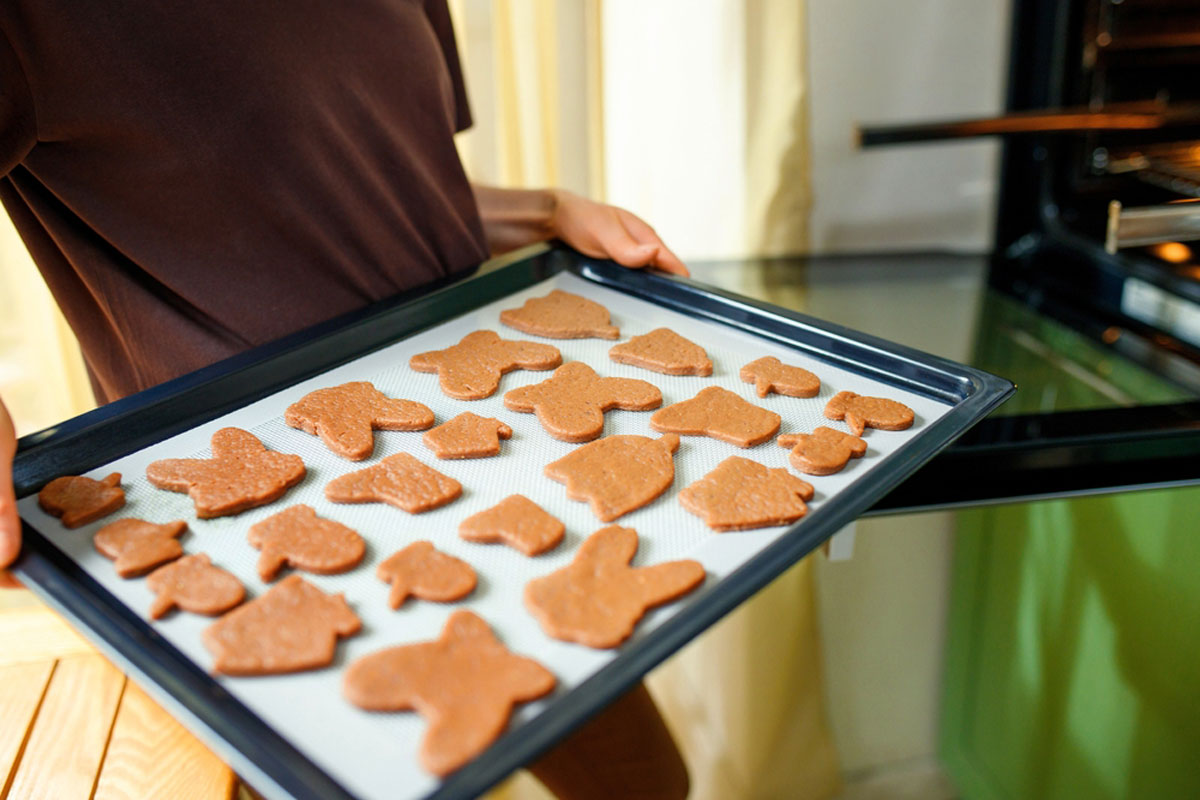Baking is a science, and using the right tools can make all the difference in achieving perfect results. Parchment paper and silicone baking mats are essential tools for both amateur and professional bakers, providing a non-stick surface and even heat distribution. If you’ve ever struggled with cookies sticking to the tray or unevenly baked pastries, mastering the use of parchment paper and baking mats can transform your baking game. Here’s everything you need to know.
Parchment Paper: The Versatile Baking Essential
What Is Parchment Paper?
Parchment paper is a grease-resistant, heat-resistant paper that is coated with silicone or another non-stick material. It is widely used for lining baking sheets, wrapping foods, and even cooking en papillote.
How to Use Parchment Paper Effectively
- Lining Baking Sheets: Prevent cookies, pastries, and roasted vegetables from sticking by placing a sheet of parchment paper on your baking tray.
- Layering in Cake Pans: Cut parchment to fit the bottom of a cake pan to ensure easy release without the need for excessive greasing.
- Rolling Out Dough: Place parchment paper between dough and rolling pin to prevent sticking and reduce the need for extra flour.
- Cooking En Papillote: Wrap fish, chicken, or vegetables in a parchment paper packet to lock in moisture and flavor while baking.
- Preventing Messes: Use parchment paper under pie crusts or pizzas to catch drips and make cleanup effortless.
Tips for Using Parchment Paper
- Always trim parchment paper to fit your baking surface to prevent burning.
- Do not use parchment paper under a broiler or on direct flames, as it can ignite.
- If reusing parchment paper, ensure it’s clean and free of baked-on residue.
Silicone Baking Mats: A Durable Alternative
What Are Silicone Baking Mats?
Silicone baking mats are reusable, non-stick baking surfaces made from food-grade silicone and reinforced with fiberglass. They provide a more durable and eco-friendly alternative to parchment paper.
Advantages of Silicone Baking Mats
- Non-Stick Surface: No need for grease or spray, making them a healthier option.
- Even Heat Distribution: Helps prevent over-browning and uneven baking.
- Reusable: Unlike parchment paper, silicone mats can be washed and reused many times.
- Multi-Purpose Use: Can be used for baking, kneading dough, rolling out pastries, and even candy making.
How to Use Silicone Baking Mats Effectively
- For Cookies and Pastries: Simply place the mat on a baking sheet for a perfect non-stick surface.
- For Roasting Vegetables: Use a silicone mat to prevent sticking and ensure even roasting.
- For Rolling Dough: Provides a stable, non-slip surface for rolling out pie crusts and cookie dough.
- For Candy Making: Heat-resistant up to 480°F (depending on the brand), silicone mats can handle hot caramel and melted chocolate without warping.
Tips for Using Silicone Baking Mats
- Always clean with warm, soapy water to remove grease buildup.
- Store flat or rolled up to prevent creasing and damage.
- Avoid cutting directly on the mat to prevent slicing through the silicone.
Parchment Paper vs. Silicone Baking Mats: Which One to Choose?
Both tools have their advantages, and the best choice depends on your baking needs:
- Use parchment paper for tasks requiring a disposable, easy cleanup option or when baking at high temperatures (as some silicone mats have heat limits).
- Use silicone baking mats for a long-term, eco-friendly solution that provides consistent results for everyday baking.
Final Thoughts
Using parchment paper and silicone baking mats like a pro means understanding their strengths and applications. Whether you’re baking delicate macarons, roasting vegetables, or preventing sticky messes, these tools will help you achieve bakery-level results in your own kitchen. Invest in both, and you’ll always have the perfect tool for any baking challenge!

